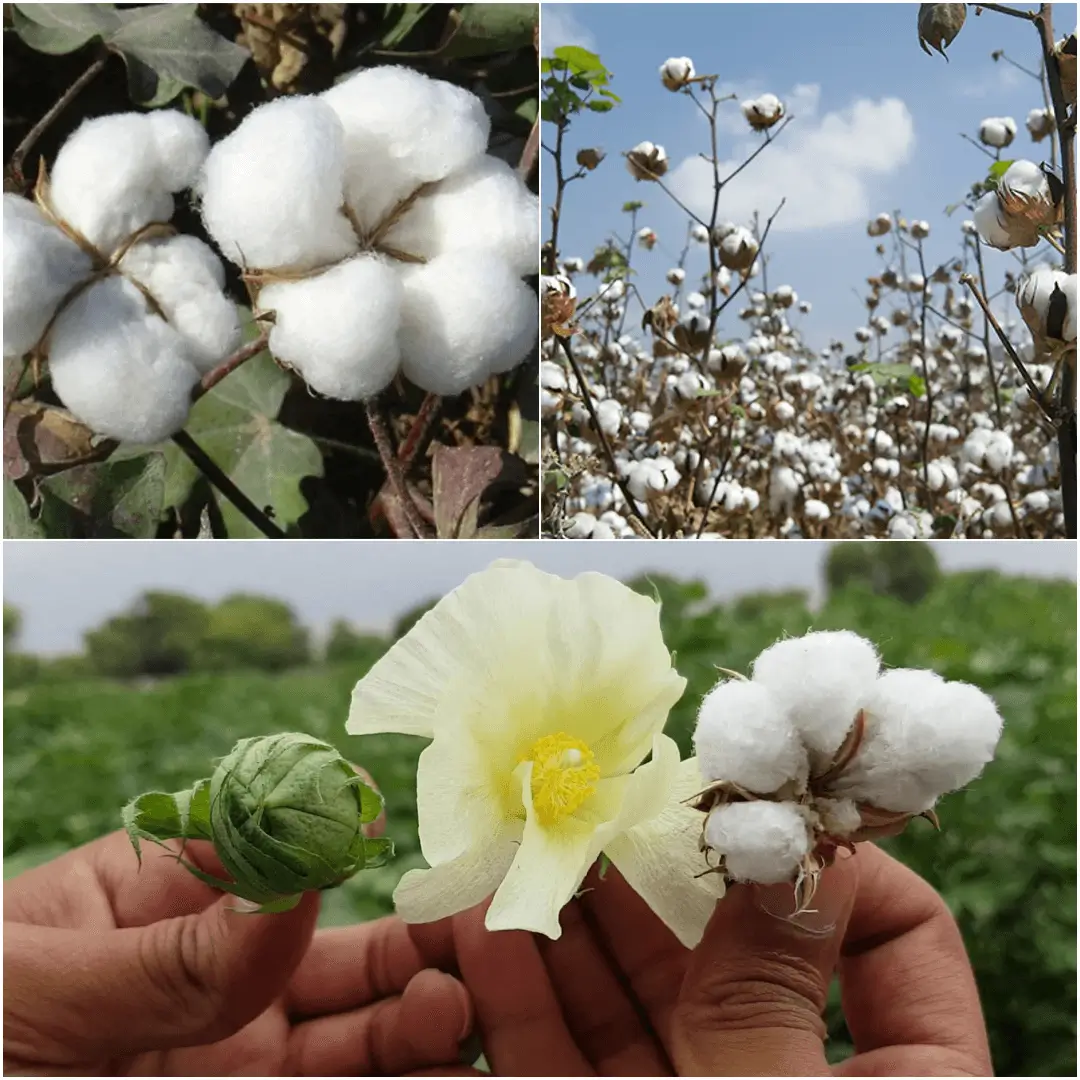Have you ever thought about growing your own cotton? It’s easier than you might think and comes with a sense of accomplishment when you harvest your fluffy white bolls. Cotton, a versatile and historically significant crop, is used in everything from clothing to household items. Whether you’re looking to dabble in cotton farming or simply want to add an exotic touch to your home garden, this guide will walk you through the process of growing cotton successfully.
Understanding the Basics of Cotton Growth
What Makes Cotton Special?
Cotton is more than just a fabric—it’s a plant that has shaped human history for centuries. Its soft fibers are harvested from the cotton bolls and spun into thread, making it an essential crop for textiles. Not only is cotton fascinating from a historical perspective, but it’s also surprisingly resilient and well-suited for home gardening.
Cotton’s Ideal Growing Conditions
Cotton thrives in warm climates and needs a long growing season, typically around five to six months of frost-free days. In general, cotton grows best in areas with hot, dry summers and well-drained soil.
Preparing the Soil for Cotton
The Importance of Rich Soil
Cotton plants love rich, fertile soil. To get the best results, you’ll need to enhance your soil with organic matter. The goal is to create a nutrient-dense environment where your cotton plants can establish strong roots and flourish.
Composting to Enhance Soil Quality
Adding compost to your soil before planting is crucial. Compost not only provides essential nutrients but also improves soil structure, helping with water retention and drainage. Think of it as giving your cotton plants a strong nutritional foundation to grow from.
Position and Sunlight Requirements
Why Cotton Loves Full Sun
If there’s one thing cotton can’t get enough of, it’s sunlight. These plants need at least 6-8 hours of full sun each day. The more sunlight they receive, the better their chances of producing healthy, abundant cotton bolls.
Protecting Cotton from Frost Damage
Cotton is sensitive to frost, so it’s essential to plant it after the last frost of the season. If you live in an area with cooler climates, consider starting your seeds indoors to give them a head start and transplant them once it’s safe.
Fertilizing Your Cotton Plants
When and How to Feed Cotton Plants
Cotton is a heavy feeder, meaning it requires a lot of nutrients to grow well. Before planting, mix a balanced organic fertilizer into the soil. Once your plants start flowering in midsummer, it’s a good idea to add more fertilizer or use a liquid plant food to keep them thriving.
Organic vs. Chemical Fertilizers for Cotton
For the best results, organic fertilizers are a fantastic choice. They provide slow-release nutrients that nourish your cotton plants over time. Chemical fertilizers can also work but may require more careful application to avoid burning the plants.
Spacing for Healthy Cotton Growth
Single Plants Spacing
When planting individual cotton plants, make sure to space them about 1′ 11″ (60cm) apart. This gives each plant room to expand and grow without competition for nutrients.
Row Spacing Guidelines
If you’re planting in rows, space your plants about 1′ 5″ (45cm) apart with a row gap of 3′ 3″ (1m). This setup allows for easier maintenance and harvesting while ensuring each plant gets the resources it needs.
How to Sow and Plant Cotton Seeds
Direct Sowing vs. Indoor Starting
In warmer climates, you can sow cotton seeds directly into the soil once it’s warm. However, if you live in a cooler region, starting seeds indoors is a smart move. Just remember to transplant them after the last frost, being careful not to disturb the roots.
Preparing Seeds for Planting
To ensure good germination, soak your cotton seeds in water for a few hours before planting. This helps soften the outer shell and encourages quicker sprouting.
Watering Guidelines for Cotton Plants
Cotton plants need plenty of water during the early growth stages. However, once established, they prefer slightly dry conditions. Overwatering can lead to root rot, so strike a balance between keeping the soil moist and allowing it to dry out between waterings.
Cotton Growth Notes for Success
Heat Requirements for Cotton
Cotton is a heat-loving plant. If you’re in a cooler region, you can increase soil warmth by growing your cotton in large, dark-colored containers. These containers absorb heat, helping the roots stay warm even when temperatures drop.
Managing Watering – Too Much vs. Too Little
While cotton doesn’t mind a bit of drought, it doesn’t respond well to overwatering. Always make sure your soil drains well to prevent waterlogged roots, which can harm the plant.
Harvesting Cotton: When and How
Signs Cotton is Ready to Harvest
Cotton is ready for harvesting when the bolls (the protective capsules around the cotton fibers) split open, revealing the fluffy cotton inside. This usually happens during a dry spell, making it easier to harvest without wet cotton fibers.
Drying and Storing Your Cotton
Once harvested, cut the cotton with long stems and dry them in bunches, similar to drying herbs. This ensures the fibers remain in good condition and can be stored or spun into thread later.
Common Cotton Growing Problems and Solutions
Dealing with Night-flying Beetles
Night-flying beetles can chew holes in your cotton leaves, but don’t worry too much—this is mainly a cosmetic issue and won’t significantly affect your harvest.
Other Potential Pests and Issues
Keep an eye out for aphids and mites, which can be more damaging. Using organic pest control methods can help keep these pests in check without harming your plants or the environment.
Planning Your Cotton Planting and Harvesting Calendar
Determining the Right Time to Plant
Cotton should be planted when the soil has warmed, typically in late spring. Use historical weather data for your area to determine the best planting window.
Harvest Timing Based on Local Weather
Once your bolls have opened and revealed the cotton, it’s time to harvest. Be sure to do this during a dry spell to avoid moisture buildup, which can damage the cotton.
Growing cotton is an enjoyable and rewarding experience, whether you’re doing it for fun or practicality. With the right care, spacing, and a little bit of attention to the weather, you can grow your own cotton at home. Follow the steps outlined in this guide, and you’ll be well on your way to harvesting your own cotton bolls!
FAQs
Can I grow my own cotton?
Yes, you can grow cotton at home, as long as you have the right growing conditions—plenty of sun, rich soil, and protection from frost.
How long does it take to grow cotton?
Cotton takes about 5-6 months of frost-free weather to fully mature and be ready for harvest.
Is cotton easy or hard to grow?
Cotton is relatively easy to grow if you provide it with the proper conditions. It thrives in warm climates with full sun and well-drained soil, but it can be sensitive to frost and overwatering, so careful attention is needed.
What is the method of growing cotton?
To grow cotton, you should start by preparing rich soil with compost. Sow seeds directly into the ground in warm weather, or start them indoors if you’re in a cooler climate. Water regularly but avoid overwatering, and ensure your cotton plants get plenty of sun. When the cotton bolls open, harvest them by cutting the cotton on long stems.


